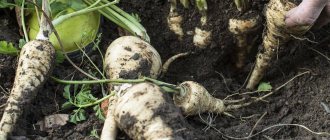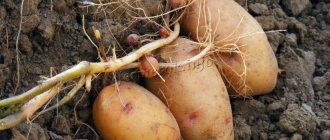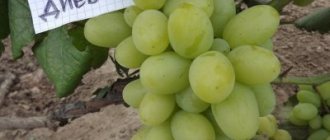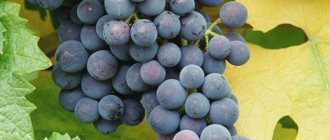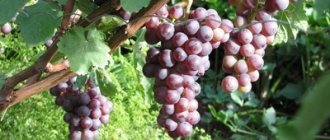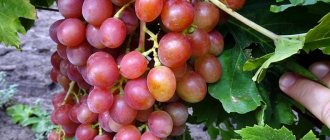The well-known root vegetable carrot has rather contradictory information about who was the first to cultivate it. Three thousand years ago, the Greeks and Romans already knew about this plant. Sources speak of the use of carrots as food during the period of late antiquity - in the 1st century AD. Today we will find out what color carrots were originally and what colors can be found now.
Ancestors of modern carrots
There is no exact historical information about the origin of the plant. Excavations indicate that the ancestors of modern carrots lived on the plains of the mountains of Afghanistan and Iran - it was there that fossilized seeds were found that had lain for 5 thousand years.
Afghanistan is considered the birthplace of the root crop. Many varieties of wild species still grow in this country.
The plant, which is found in natural habitats, has a tough, rough and bitter rhizome that is white or light yellow in color. You've probably come across such specimens between ordinary carrots in your garden bed, this is how it used to be.
The wild ancestor of carrots
In ancient times, people used fragrant leaves and seeds rather than root vegetables as a remedy.
Both the Greeks and the ancient Romans called the sweet root vegetable differently. In sources that have survived to this day, his name could hide the parsnip that was used at that time.
In the second century AD, the ancient Roman physician Galen proposed to name the queen of vegetables by the name Daucus, and the ancient Greek writer Athenaeus at the same time called her Carota. Under this name we meet the sweet root vegetable in a cookbook from 230 AD. With the fall of the Roman Empire, written references to the carotene plant disappeared and the queen of autumn entered the European arena in the middle of the 14th century.
Carrots were originally purple... What color were carrots originally (before breeding)?
Carrots are one of the most important root vegetables for humans, grown in temperate climates.
The vegetable cultivated today was derived from wild varieties whose roots were anything but orange. As scientists' research shows, carrots were originally purple or yellow. It is difficult to judge the origin and evolutionary paths of the existing 80 species of cultivated carrots today. But archaeologists discover carrot seeds during excavations along the entire Mediterranean coast, in North Africa, in the Asian region and European countries with a temperate climate.
Wild species, most likely, were initially a source of greenery rather than juicy root vegetables for humans. Perhaps carrots were also used as a medicinal plant.
Today, the existence of two original types of cultivated carrots has been confirmed. Eastern or Asian carrots historically have a purple color due to the anthocyanin pigment. And in some, the color is so intense that they began to talk about black carrots.
The beginning of cultural cultivation of purple carrots probably occurred in the 10th century. Three centuries later, purple root vegetables appeared in the Mediterranean, and a little later they began to be grown in China and Japan. Eastern yellow and purple carrots are still grown in Asia today, used to make strong alcoholic drinks, but in popularity and distribution they are inferior to Western varieties with orange roots.
Modern Western carrots are colored by carotene, so the roots can be red, orange, yellow or almost white.
Most likely, such varieties were the result of hybridization and crossing of oriental-type plants with wild subspecies of Mediterranean yellow carrots. The root vegetables consumed by Europeans until the 17th century were thin, highly branched and not at all juicy.
Beginning of selection
Carrots (Daucus) are a member of the Apiaceae family, a biennial plant, sometimes annual or perennial. In the first year of the growing season it forms a rosette of leaves and a root crop, and a herbaceous bush with seeds in the second. The plant has 60 species that differ from each other.
The queen of autumn appeared on the territory of Europe in the 10th-12th centuries and yellow and red varieties were used for economic use. The familiar orange carrot is a product of Dutch selection in the 17th century.
We are so accustomed to yellow-hot carrots that we are surprised at how diverse the colors of its species are: white, red, yellow, green, violet, purple, even black.
- Black carrots
Multi-colored fruits
In ancient times, people made drinks from carrot leaves and used the seeds. Carrots were originally purple. Today, breeders have developed tens of thousands of varieties and hybrids. An increasingly common form for obtaining a new variety is hybridization. Root vegetables are a good object for the application of biotechnology, and carrots are a model plant. It is here that reliable methods for restoring viable plants from tissues, isolated cells and even individual protoplasts have been developed. This makes it possible to clone plants with genes at the cellular level.
Carrots with red root vegetables
Cultivated carrots can be used for table or fodder purposes.
Varietal diversity has the following classification:
- Root shape: oval;
- cylindrical;
- conical;
- orange;
- small – up to 100 g;
- good ones;
- early ripening (growing season 70-100 days);
Carrot roots with different colors
Lunar White
A relatively new variety of white carrot.
The variety is mid-season, very productive, and resistant to unfavorable growing conditions.
The root crops are cone-shaped, with a pointed tip, up to 30 cm long, up to 3-4 cm in diameter, with a smooth moon-white surface and a core of the same color.
The pulp is crispy, very sweet, delicate taste, juicy. The fruits do not lose their taste after heat treatment. The storage period is long.
To avoid greening of the tops, make sure that the entire fruit is underground during the growing process.
Formation of root color
The plant forms a root crop in the first year of planting. Its color depends on the variety (hybrid) and growing conditions. Depending on the variety, color will be provided, and growing conditions will affect the brightness of the color. So a carrot grown on heavy loam will be much brighter than its sister grown in sandy soil.
The color of the root crop directly depends on the coloring pigments inherent in this species.
- Carotenoids cause the orange-red color
- anthochlor - yellow,
- anthocyanin - purple,
- lycopenoid – blood red.
Diseases, pests and their prevention
Most often, this culture suffers from the following diseases:
- Bacteriosis. It affects root crops and leads to rot.
- Fomoz. As this disease develops, brown spots appear on the surface of the fruit.
- Septoria. At first, the disease affects only the leaves. However, over time, root vegetables also begin to look painful. They turn brown and rot.
To protect planted vegetables from diseases, it is necessary to treat them with fungicidal agents 2-3 times per season.
Additional Information! Carrots also suffer from pests. It can be attacked by slugs, cutworms and carrot flies.
The difference between purple, yellow and white carrots and orange ones
Carrots of all types are useful for regular consumption. Exotic varieties of carrots differ from traditional ones in the presence of coloring pigments, which determines the color of the fruit and some differences in the economic use of one or another type. Thus, white carrots are very well used in cosmetic procedures for face masks: in orange carrots, carotene pigments can turn light skin yellow.
Purple carrots have the disadvantage of turning everything around them purple. This disadvantage can be exploited when sauerkraut and coloring pastry cream using juice.
Why are carrots orange?
Purple Sun F1 (Purple Sun)
The hybrid is early ripening, productive, and has very high disease resistance.
The root crops are large, elongated-conical, leveled, with a sharp tip, up to 25-30 cm long, up to 3-4 cm in diameter, with a smooth surface of burgundy-violet uniform color and a core of the same color.
The pulp is crispy, very sweet, soft taste, with a pleasant aroma. The fruits do not lose their taste and bright color after heat treatment. The storage period is long.
Features of harvesting and storage
The timing of harvesting purple carrots depends on the selected variety. Most are suitable for long-term storage and have good shelf life.
How and when to collect
Harvest occurs at the end of June - beginning of September. This is done in dry, sunny weather. Root crops are pulled out by hand or dug up with a shovel, cleared of earth clods and dried. Drying takes about a week.
Storage features and keeping quality of the variety
A basement or cellar is suitable for storing purple carrots, that is, a dark room with a temperature within 0 ... + 6 ° C and a humidity of 70%. Dry vegetables are placed in plastic or wooden boxes, sprinkled with sand, moss or sawdust so that the root vegetables do not come into contact with each other.
There is another way of winter storage. It involves glazing vegetables with clay. It is diluted in water to a creamy consistency, each fruit in turn is dipped into the mixture and dried. Dried carrots are stored until the next season without losing their beneficial properties.
Ripening time
Young carrots
The longer carrots grow in the garden, the better their taste and longer shelf life.
Breeders have developed many varieties with early, medium and late ripening periods. The growing season of early varieties is 85–100 days. Juicy, tender early carrots cannot be preserved for long. It is intended for quick consumption or preservation. Carrots planted in spring are usually eaten in summer.
Variety Alenka
Early varieties:
- Gourmand.
- Amsterdam.
- Alenka.
- Sophie.
- Varvara Krasa.
- Sweet tooth F1.
The growing season for medium varieties is 105–120 days. Carrots sown in mid-June are harvested in the fall and can be stored until mid-winter.
Variety Chantane
Medium ripening varieties:
- Nantes.
- Shantanay.
- Autumn holiday.
- Morelia F1.
- Berlin F1.
- Samson.
The growing season of late varieties is over 120 days. For successful ripening, late varieties, like early ones, are sown in the spring. Over a period of more than four months, root vegetables will have time to accumulate many useful substances. They have excellent taste and a long shelf life - until spring.
Variety Queen of Autumn
Late varieties:
- Queen of Autumn.
- Dobrynya.
- Carboli F1.
- Monastyrskaya.
Orange
Orange carrots contain a large amount of carotene. The enzyme gives root vegetables their color. In the human body, it is converted into vitamin A, which is also called growth vitamin. Vegetables have a sweet taste without bitterness and juicy pulp.
Orange carrots
Mid-season and late varieties are stored for winter storage. Early crops are recommended to be used in a short time:
- Children's sweetness is an early variety, the maturity of root crops occurs in 90-100 days. 100 g of product contains 8.3% sugar and 13 mg of carotene. The culture is high-yielding. Grow 8 kg of mono per 1 m2. The weight of one fruit is 200 g. The core is thin. Runs along the entire length of the fruit;
- Maestro - late culture. The harvest can be harvested after 130 days. Root vegetables have a flat and smooth surface, a thin protective shell, and the eyes are not visible. The weight of one carrot is 160 g. The yield is 5 kg/m2;
- Emperor is a late variety. The roots are cylindrical in shape, with a strongly rounded end. Vegetables are harvested after 130 days. The weight of one fruit is 200 g, length 25 cm. Fructose 6.9%, carotene 13 mg per 100 g of product. Root crops are stored until the new harvest;
- Nantes-4 - vegetables are harvested 100 days after the first leaves appear. The variety is used as a basis for creating hybrids that exhibit resistance to infectious and fungal diseases. One root can weigh 150-200 g. Productivity per 1 m2 is 5 kg;
- Bolero is a mid-season crop. The root ripens in 110-120 days. Vegetables are stored for winter. The fruits are large, 25 cm long, weight 200 g. The variety is hybrid, the plants do not suffer from powdery mildew, cercospora blight, or Alternaria blight. Sugar in vegetables is 8%, carotene is 13 mg.
Carrots are biennial plants. For food, root vegetables are harvested in the first year of growth. To obtain seeds, the crop is grown further. The root gives rise to the arrow on which the inflorescences develop. The plant blooms with white small flowers. If agricultural practices are violated, the metabolism in the root crop may change, which leads to bolting. The core turns green. This root vegetable has a bitter taste and hard flesh.
Early varieties can be planted both in spring and late autumn. They are adapted both to open ground and to growing in greenhouses. Early and late varieties tolerate frosts, but develop poorly at high temperatures, more than 25 C.
More on the topic: Description of Samson carrots
Mid-season crops adapt well to hot climates. For orange carrots, neutral acidity soil is preferable: pH 6 units. Chalk, ash, and slaked lime are used for leaching.
Yellow
Yellow carrots are very popular among eastern peoples. They use root vegetables to prepare national dishes, pilaf, and salads. Vegetables are not left for the winter. They lie badly. They are recommended to be used within 2-3 months after harvest.
Yellow root vegetables contain a high percentage of xanthophyll, which gives the fruit its corresponding shade:
- Mirzoi 304 – the crop belongs to the mid-season group. The harvest is harvested after 120 days. Vegetables contain a lot of sugar, more than 9%. The average weight of the fruit is 150 g. Root crops do not grow large. Their length is 13 cm, diameter is 5 cm. The shape of the fruit is cylindrical, with a blunt end. The culture shows good development on sandy soils, 6 kg/m2;
- Yellowstone - valued for the high content of vitamins in its fruits; carotene more than 11%. The pulp is sweet, aromatic, crispy and juicy. The variety is mid-season, vegetables are harvested after 120 days. Up to 9 kg of root crops are grown per 1 m2. The fruit is large and cone-shaped. It can grow up to 25 cm in length and weighs 300 g. Manufacturers recommend storing vegetables for winter storage;
- Solar Yellow is an early culture. Harvesting is carried out after 90 days. The fruits are small in size, 20 cm long, 3 cm in diameter. One root can weigh no more than 100 g. The plant loves the sun. For it, you need to find a bright area in the garden. Up to 4 kg of vegetables are grown per 1 m2. The optimal regime for the normal development of root crops is 25 C.
View this post on Instagram
Posted by Maria and the MAXI family (@maruschamaxi) Aug 7, 2021 at 5:17 PDT
Yellow carrots are rarely susceptible to infectious diseases. With proper preparation of the soil for sowing, the development of putrefactive bacteria can be avoided.
To remove garden insects, the soil is treated with Nitrophoska. Adult plants are sprayed with solutions from potato tops. Each chemical product has a certain rejection period.
Lunar white
The variety has an elongated shape and a perfectly white color, its skin is thin, and the flesh is juicy and crispy. Requires careful care: regular watering, geometric planting, removal of all weeds, properly selected soil - peat or black soil, and temperature control is also necessary.
Lunar white carrots are an early ripening species; if all conditions are met, you will harvest in 2 months. Root vegetables are stored for a long time - taking into account the temperature conditions, they can last a whole year.
Features of planting and growing
Planting carrots begins with preparing the seeds. To speed up the germination of seed, seed soaking, heat treatment, bubbling and burying are used.
Attention! Seeds are sown in open ground in early spring, when the top layer of soil warms up to +5°C.
Landing Features:
- if the soil is light, the seeds are sown to a depth of 20-30 mm, if it is heavy - at 15-20 mm;
- row spacing – approximately 20 cm;
- The gap between seeds in a row is about 2 cm.
Caring for growing carrots includes:
- Loosening the soil . Purple carrots need to carry out this procedure regularly, starting with the first sprouts. Loosen the soil after rain.
- Fertilizer application. During the season, it is enough to make 2 feedings. It is recommended to apply liquid fertilizers made from nettles, manure and compost monthly.
- Thinning of seedlings. The first procedure is performed when 1-2 leaves are formed. Leave large sprouts at a distance of 2 cm from each other. The procedure is repeated when 2 pairs of leaves are formed on the bushes, the distance between the seedlings is increased to 4 cm.
- Watering. At first, carrots are watered every other day. Afterwards, the number of waterings is reduced to once a week, and the ridges are watered generously.
- Weeding. Weeds are removed manually as they appear.
- Mulching. The procedure begins when the tops grow to 10-15 cm. Finely chopped grass is used as mulch. Repeat the procedure after 2-3 weeks. This reduces the number of weeds and improves the quality of root crops.
Differences in cultivation compared to conventional species
Purple carrots have better germination compared to regular carrots, so the seeds are sown at a distance from each other. After germination, the plantings are thinned out so that the root crops can develop freely.
Cosmic Purple
The root vegetables are purple-violet in color on the outside with bright orange juicy and crispy flesh. Carrots taste rich and sweet and are full of vitamins and antioxidants.
This crop is very early ripening; it takes only 60 days from germination to harvest. Does not require special care, it requires cool growing conditions. Usually this variety is consumed raw, since when boiled or fried it loses its vitamins and attractive appearance.
The influence of growing conditions on the quality of root crops
Currently, breeders have developed so many varieties of carrots that it is impossible to list them all. They are classified according to such characteristics as shape, color, average weight of the root crop, taste properties, and duration of the growing season.
Small root vegetables are obtained in shaded areas. Thickened plantings produce thin, weak roots. Ugly, coarse specimens grow on clayey and hard soils, bitter specimens grow on acidic soils, and devoid of succulence in dry soil. When the soil is over-moistened, large, almost fodder carrots are obtained; excess manure leads to branching of the “tops” and curvature of the “roots”.
Please note: even good seeds can produce bad fruit. The appearance and quality of carrots is influenced by the place where they were grown, the soil, and care features.
What are the benefits of colorful root vegetables?
Colored carrots are absolutely not inferior, if not superior, to their orange relative in useful qualities. In addition, it looks very beautiful in salads, and various dishes decorated with such carrots become the highlight of the table. Through the efforts of breeders, more than 120 colored varieties have been developed. They differ not only in the variety of colors, but also in the content of plant pigments:
- the rich orange color of carrots indicates a high presence of carotene;
- yellow root vegetables contain lutein;
- in burgundy - betaine;
- in red - lycopene;
- black, blue, yellow, purple and red contain anthocyanin.
White root vegetables lack carotenoids and pigments, so they are less healthy. But such carrots do not cause allergic reactions in people who cannot tolerate carotene. It is often used for baby food.
Composition and beneficial properties
Carotene, which gives carrots their orange color, is contained in the product in large quantities: 9-10 mg per 100 g. The vegetable also contains vitamins C, E, group B, carbohydrates, in particular glucose, minerals: calcium, potassium, magnesium, phosphorus, sulfur is a valuable protein. The energy value of carrots is 28-31 kcal/100 g.
Simple carrots are a truly valuable product for the human body. By eating it daily, a person improves the condition of the skin, hair, nails, and ensures the prevention of visual acuity.
The root vegetable is able to regulate blood cholesterol levels and blood pressure. The fiber contained in orange and yellow carrots has a beneficial effect on intestinal function.


